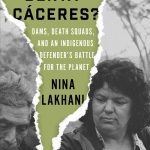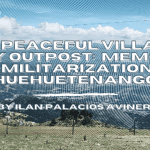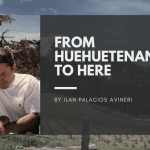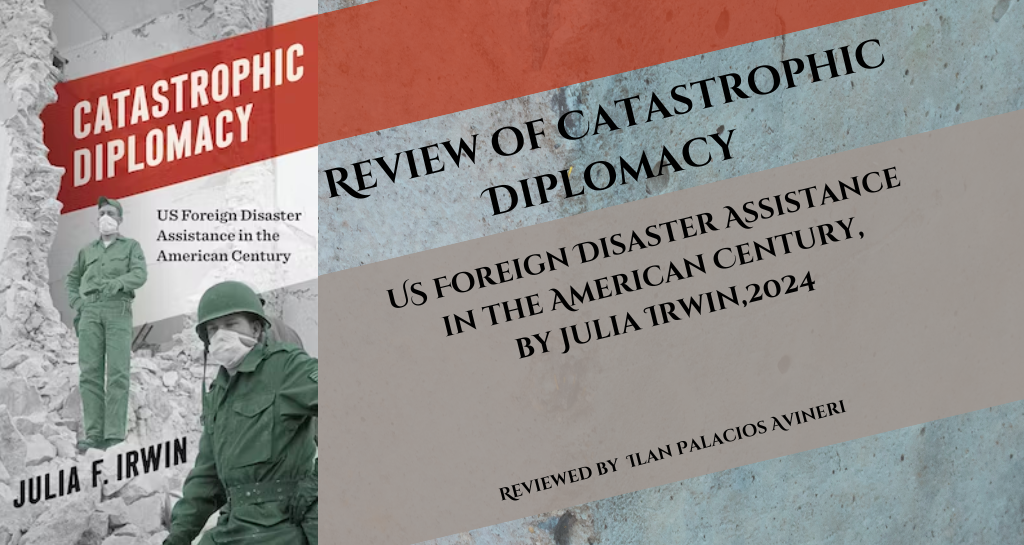
The United States became an influential global actor during the twentieth century, cementing its role on the world stage through decisive interventions in both World Wars and via a range of US cultural and technological innovations. So pervasive was the US presence that some scholars have since christened this era the “American Century.” In Catastrophic Diplomacy, Julia Irwin delves into an often-overlooked aspect of the US’s rise: disaster diplomacy. Her sweeping study examines US responses to a panoply of rapid-onset disasters across the twentieth century, ranging from earthquakes to hurricanes to floods. Ultimately, she argues that US disaster diplomacy gradually evolved from ad-hoc mobilizations in the nineteenth century to become an indispensable pillar of US foreign policy by the late twentieth century.

Source: Wikimedia Commons.
To make this case, Irwin divides her study into three parts. Part I explores the earliest instances of US disaster diplomacy. The country’s first foray into international disaster relief began in 1812 following a massive earthquake in Venezuela. The seismic event struck amid uprisings against Spanish colonial rule. The widespread destruction elicited support from some in the US who recalled their struggle for independence from the British decades prior and recognized the disaster as an opportunity to promote Pan-American solidarity without antagonizing Spain. Irwin explains how, despite this early recognition of disaster diplomacy’s potential, responses proved scattershot for the remainder of the century. Logistical limitations and cultural beliefs that the government should not be responsible for assisting other nations ended up limiting assistance programs.
US reluctance to routinize disaster aid began to change around the turn of the century due to several different factors. US politicians and missionaries began traveling more outside US borders and forged international connections. Simultaneously, advancements in steam-powered ships and transoceanic cables facilitated the US’s capacity to respond to disasters across the globe. Shifting attitudes towards disaster diplomacy became increasingly evident under the presidencies of Roosevelt, Taft, and Wilson. Collectively, they consolidated what Irwin dubs the “three pillars of US disaster diplomacy”: the State Department, the Armed Forces, and the voluntary sector. Irwin uses several case studies to reveal this process. After a massive earthquake struck Messina, Italy, in 1908, for example, the three pillars coalesced not only to distribute immediate relief but also to engage in longer-term projects, including building housing, a hotel, and memorials. Irwin catalogs such relief efforts in stunning detail, documenting the names of shipping vessels, the cargo they carried, and the prejudices of administrators.
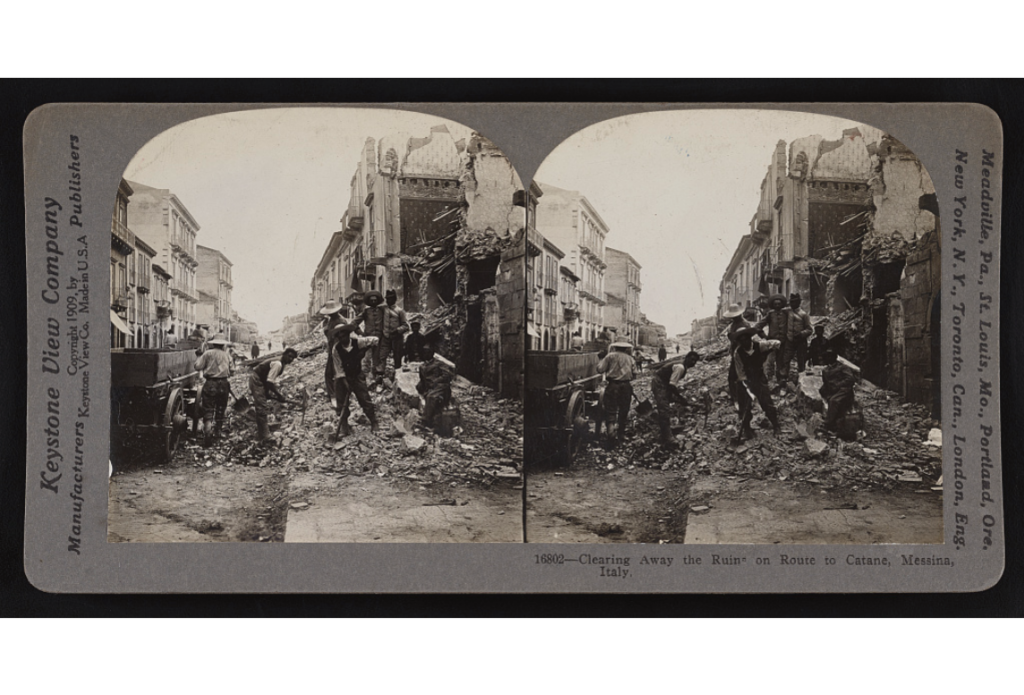
Source: Library of Congress
In Part II, Irwin chronicles how the US accelerated its provision of and experimentation with disaster relief initiatives between World War I and II. During this period, the US executed projects across numerous countries, including Guatemala, Japan, the Dominican Republic, Nicaragua, and Chile. This segment features Irwin’s sharpest chapter, Chapter 8, focusing on the 1931 Yangtze-Huai River Floods, which devastated war-torn China. Initially, the US hesitated to aid China, partially due to racist assumptions that Chinese citizens could not properly administer relief. Irwin shows how US self-interest, driven by the Great Depression’s decimation of the US agricultural sector, altered this attitude. US farmers and the Federal Farm Board amassed gigantic surpluses over this period. The flooding thus presented an opportunity to “repurpose[sic] this overabundance as humanitarian assistance” [p. 159]. In this context, Irwin’s analysis echoes David Harvey’s concept of a “spatial fix,” as she demonstrates how the US approach paradoxically harmed local Chinese farmers by flooding markets with grain and devaluating local crops. By exposing this episode, Irwin underscores the adverse consequences of professed disaster relief assistance.
Part III explores how, during the Cold War era, the US significantly ramped up its disaster relief efforts, transforming them into a vital instrument of its foreign policy. This period, extending from the 1940s to the 1970s, witnessed the US responding “more frequently, more swiftly, more liberally, and more globally than ever before” [p. 185] to various natural disasters worldwide. Irwin partially attributes this expanding “humanitarian geography” to the network of military bases established during and after World War II and the creation of new agencies like the International Cooperation Administration. She delves into several critical operations, from responses to storms in Mexico and South Korea to earthquakes in Morocco and Yugoslavia. Throughout this discussion, she diligently underscores how the US used disaster relief as both a humanitarian aid and a strategic tool to further its geopolitical interests, but with greater breadth than ever.

NWDNS-286-ME-1(4))
Despite these accomplishments, Irwin’s evaluation of the legacy of US disaster diplomacy is uneven at times. The book achieves a number of its ambitious goals, exhaustively documenting US responses to hundreds of disasters and situating international relief efforts at the center of US foreign policy. However, Irwin’s ability to evaluate the “successes” and “shortcomings” of these aid operations is limited by her choice to de-center the putative “recipients” of aid. This is evident in her exploration of fraught disaster relief efforts in Nicaragua in 1931. Irwin engages minimally with the perspectives of ordinary Nicaraguans, employing vague nouns like “some,” “others,” and “a man claiming to be a representative of Augusto Sandino” [p.149]. Curiously, we hear more from other Central American and Mexican relief administrators operating in Nicaragua than Nicaraguans themselves. These portrayals render the local populations as passive, almost faceless actors.
This choice results in a conflation between US perceptions of aid initiatives and their legacy writ large. In a way, this replicates issues with the notion of the “American century,” a term that underscores US outsized influence during the twentieth century but risks overstating the hegemony of US efforts. A more nuanced view might have been achieved by reducing the number of case studies from hundreds to dozens to strike a better balance between geographic breadth and depth of knowledge. Recent books such as Sarah Foss’s On Our Own Terms have shown how to write “layered” histories of the Cold War that simultaneously place presidents and peasants at the center of global phenomena. Notably, Irwin models this type of stratified history in her earlier analysis of the 1931 floods in China. However, the integration of such layers is uneven throughout the book.

Source: Wikimedia Commons.
Notwithstanding this critique, Catastrophic Diplomacy remains a significant scholarly achievement. Irwin’s exhaustive research is evident in her consultation of over a dozen archives and presidential libraries across the US, the United Kingdom, Italy, and Switzerland. Her analysis paints a vivid picture of the evolution and nuances in US disaster relief operations across the decades, compellingly demonstrating disaster diplomacy’s pivotal role in shaping US foreign policy. Although the book falters in fully integrating local perspectives, the text nonetheless offers a comprehensive and critical examination of an important yet under-explored aspect of US international relations. Irwin’s work, rich in detail and scope, represents an invaluable resource not only for historians of US American foreign policy but also for current practitioners and policymakers in the field of international aid and diplomacy.
Check out this fascinating interview with Julia Irwin, available on our Watch and Listen section.
Ilan Palacios Avineri is a Ph.D. candidate at the University of Texas at Austin. He is a historian of Central America, focusing on twentieth-century Guatemala. His research interests include the politics of natural disasters, reconstruction, and state repression. He is a Fellow at the Teresa Lozano Long Institute of Latin American Studies and a Graduate Affiliate at the Rapoport Center for Human Rights and Justice. His dissertation project, “Out of the Rubble: The Politics of Catastrophe and Recovery in Post-Earthquake Guatemala (1974-1980),” examines how Guatemalans grappled with the shock and aftershocks of a massive earthquake that struck during a period marked by state terror.
The views and opinions expressed in this article or video are those of the individual author(s) or presenter(s) and do not necessarily reflect the policy or views of the editors at Not Even Past, the UT Department of History, the University of Texas at Austin, or the UT System Board of Regents. Not Even Past is an online public history magazine rather than a peer-reviewed academic journal. While we make efforts to ensure that factual information in articles was obtained from reliable sources, Not Even Past is not responsible for any errors or omissions.
